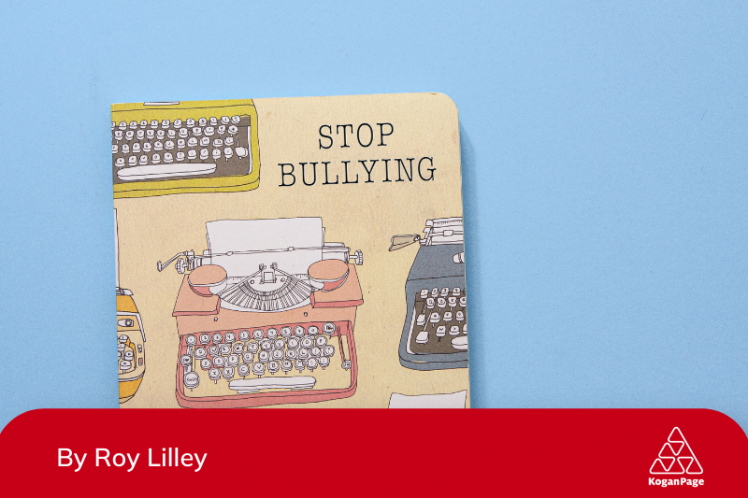Combating Workplace Cyberbullying

This is an extract from Dealing with Difficult People by Roy Lilley.
Social networking is a way of life. It’s become part of our every day.
An email or two, a holiday picture on Facebook, a Tweet – all a bit of fun. That’s all, just fun.
Well, it can be fun or it can turn into something far more sinister and worrying.
What is cyberbullying?
A person is bullied when they are exposed, repeatedly and over time, to negative actions on the part of one or more other persons and they have difficulty defending themselves.
Cyberbullying is no different from any other bullying; the bully just uses technology to do it.
The anonymity that technology creates makes it much easier for bullies to operate. They once had to be a bully face to face or use the mail. Then, the telephone. Now, email, instant messaging, web pages and digital photos make it much easier.
You are not alone
In 2005 the Department of Trade and Industry carried out a workplace survey. It was called the Fair Treatment at Work Survey and told us that 5 per cent of those interviewed had personally experienced bullying or harassment at work in the previous two years.
More than 1 in 10 said they were aware of another person who had been bullied or harassed within the same time period.
More recent surveys confirm that bullying at work is becoming more commonplace.
Four things you can do to protect yourself
- If you do use social media think very carefully about what you post. By limiting the number of people who know about your activities, lifestyle, habits and preferences it will be more difficult for a bully to pick up enough information to paint a bigger picture and may limit your risk of becoming a victim. Limiting the number of people will also make it easier to identify a bully.
Try to avoid making the situation worse. Escalation is to be avoided at all costs! Depending on how bad the situation is, the best response is no response. Bullies thrive on reaction. They want to know the power they have. Consider changing your personal email address and closing social media sites. It may seem like the bully has won. Not really; it just takes away their target and they are likely to move on. If they follow you to a new address, you have a different kind of problem, an even stronger case for legal action and a chat with the police.
Keep a record. As distressing as it may be and however strong the temptation to ‘press Delete’, don’t. Keep all the evidence. Keep emails in an ‘Evidence’ file. If it is not possible to download the offensive material into a file, take a ‘screenshot’.
Is there a workplace bullying policy? Read it and follow it. It is the law that employers have to have a minimum procedure. Additionally, it is in the employer’s interests to stamp out bullying because its consequences can lead to poor productivity, absenteeism and high staff turnover.
If you are being bullied, whether it’s face to face or online, REPORT IT – DON’T HIDE IT.
Report it to your manager, your manager’s manager, the police, your trades union or professional organization’s representative. If your workplace has one, report it to your HR department. You don’t have to suffer in silence.




